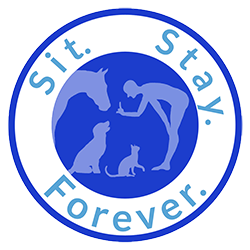Fall is here—and so are the bugs. In many areas, ticks and fleas become more active during the cooler months. Addressing an infestation requires a comprehensive, multi-pronged approach that targets all stages of the flea life cycle. Neem oil, a natural remedy, plays a valuable role thanks to its insect growth regulator (IGR)-like properties.
Neem as an Insect Growth Regulator
Neem contains a compound called azadirachtin, which disrupts the hormonal systems of insects, interfering with their ability to grow, molt, and reproduce. Scientific studies—such as those published in Insects (2020) and the Journal of Economic Entomology (2018)—highlight its effectiveness.
How Neem Works
Inhibits Molting: Disrupts the hormonal signals fleas and other insects need to transition through life stages.
Prevents Reproduction: Reduces fertility in adult fleas, lowering egg production.
Repels and Kills: Deters fleas and kills immature stages when applied directly.
Neem’s properties make it a powerful component of a broader flea management strategy.
Understanding the Flea Life Cycle
Effective treatment requires tackling fleas at every stage: egg, larva, pupa, and adult. Duration depends on conditions like temperature, humidity, and host availability.
Egg Stage
Duration: 2–5 days
Laid on the host, then fall into carpets, bedding, and other areas. Hatch more quickly in warm, humid conditions.
Larva Stage
Duration: 5–11 days
Feed on organic debris, especially “flea dirt.” Thrive in dark, moist spaces like carpets
and pet bedding.
Pupa Stage
Duration: 1–2 weeks (can extend to months if conditions are poor)
Larvae spin cocoons and develop into pupae. Cocoons are resilient, lying dormant until
triggered by vibrations, heat, or carbon dioxide.
Adult Stage
Duration: Up to 2–3 months (with a host available)
Adults emerge, feed, and reproduce rapidly. Females lay eggs within 24–48 hours of
their first blood meal.
Total Life Cycle:
Optimal conditions: 2–3 weeks
Suboptimal conditions: Several months (due to prolonged pupal stage)
Multi-Approach Strategy for Flea Control
To eradicate fleas, you must treat pets, the home, and outdoor areas simultaneously.
1. Treat Your Pet
Tick & Flea Spray – Apply carefully. Once daily is usually sufficient for mild infestations; twice daily for severe cases (monitor for irritation).
Note: Two main types exist: water-based (generally safe for animals and fabrics) and oil-based (formulated for fur and skin only).
Our Tick and Flea Spray for Dogs is oil-based and designed for direct application to fur and skin.
www.sitstayforever.com/products/flea-and-tick-for-dogs
Flea Baths: Use pet-safe shampoos to eliminate existing fleas.
Regular Grooming: Brush with a flea comb to remove adults and eggs.
2. Clean Your Home
Vacuum Thoroughly: Daily vacuuming of carpets, rugs, furniture, and cracks. Dispose of contents in a sealed bag outside.
Wash Bedding: Wash both pet and human bedding in hot water and dry on high heat.
Use Flea Sprays: Treat carpets, upholstery, and bedding.
Steam Clean: Steam kills eggs and larvae in carpets and furniture.
3. Address Outdoor Areas
Yard Maintenance: Mow regularly and remove debris.
Diatomaceous Earth: Apply in shaded areas; it dehydrates and kills fleas.
Beneficial Nematodes: Natural predators that consume flea larvae.
4. Break the Flea Life Cycle
Insect Growth Regulators (IGRs): Use neem-based or other IGR sprays to prevent eggs and larvae from maturing.
Simultaneous Treatment: Treat pets and the environment together to avoid re-infestation.
5. Prevent Future Infestations
Monthly Preventatives: Keep pets on vet-approved flea/tick preventatives.
Regular Cleaning: Maintain consistent vacuuming and washing routines.
Monitoring: Check pets frequently and act quickly if fleas appear.
Limitations of Neem
While neem effectively interrupts the flea life cycle and repels pests, it is slower and less potent than synthetic IGRs. For severe infestations, it works best as part of a broader integrated strategy, rather than a stand-alone solution.
Bottom line:
By understanding the flea life cycle and combining neem with other methods, you can effectively combat infestations and prevent future outbreaks.



